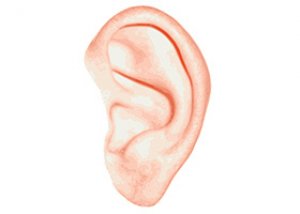
All iLive content is medically reviewed or fact checked to ensure as much factual accuracy as possible.
We have strict sourcing guidelines and only link to reputable media sites, academic research institutions and, whenever possible, medically peer reviewed studies. Note that the numbers in parentheses ([1], [2], etc.) are clickable links to these studies.
If you feel that any of our content is inaccurate, out-of-date, or otherwise questionable, please select it and press Ctrl + Enter.
Statistics of purulent otitis media in adults
Medical expert of the article
Last reviewed: 02.07.2025
 ">
">The global incidence of purulent otitis is approximately 1-46% of the planet's inhabitants. The disease is registered in the population of both developed and developing countries, which on average is from 65 to 330 million patients. At the same time, 60% of patients have hearing loss of varying degrees.
Every year, doctors record more than 30 million cases of purulent otitis. Of these, more than half are adults, and about 22% are children under five years of age.
Approximately 30 patients out of 10 thousand of the population have purulent otitis accompanied by a persistent decrease in hearing function. Statistics for chronic purulent otitis with cholesteatoma is 0.01%.
The maximum surge in purulent otitis is observed in autumn and winter. The global number of fatal outcomes caused by complications is 28 thousand patients, with the most common dangerous complications being intracranial pathologies.
The prevalence of purulent otitis in our region is defined as 8-39 cases per thousand residents. Among all patients who seek help from otolaryngologists, patients with purulent otitis make up 5-7%. At the same time, chronic purulent otitis is considered the most common disease - up to 48%. Mortality from complications in our country is from 16 to 30% of the total number of complicated purulent otitis. The most frequently diagnosed complications are inflammation of the meninges, brain abscesses.
The high incidence of purulent otitis is associated with frequent viral infections and respiratory diseases. Of no small importance is also the irrational use of antibiotics, the rare use of paracentesis in the treatment of acute otitis media, and especially the lack of proper attitude of the patients themselves to their health.
 [ 1 ], [ 2 ], [ 3 ], [ 4 ], [ 5 ], [ 6 ], [ 7 ], [ 8 ], [ 9 ]
[ 1 ], [ 2 ], [ 3 ], [ 4 ], [ 5 ], [ 6 ], [ 7 ], [ 8 ], [ 9 ]

